|
Mother’s Day, as Americans know it, was first made an official holiday in 1914. This was the culmination of over 50 years of dedicated work by many different women, most notably, Julia Ward Howe, Ann Jarvis, and her daughter, Anna Jarvis. These women were prolific organizers, starting movements and groups specifically for mother-based campaigns, child-care, education, and even world peace. However, the tradition of celebrating mothers and motherhood goes further back in history. Evidence suggests that Ancient Greek and Roman societies had festivals and celebrations intended to honor the goddesses of motherhood and mothers, like Rhea, Cybele, and Gaia. More modern and structured celebrations can be found in early Christianity, which is referred to as “Mothering Sunday.” In this context, it was a festival held on the fourth Sunday of Lent, most predominantly to recognize and exalt the Virgin Mary, mother of Jesus Christ. Mothering Sunday may have been based on other origins, as some historians have speculated. Some insist that it was modified from festivals for Cybele, and was changed to appear more welcoming to pagan converts. It is also connected in some way to celebrating one’s Mother Church, the church one was baptized at. This specific practice is recognizable in 16th century England, as young children who were sent away from home for work were given the opportunity to revisit their home communities. Returning from positions as domestic workers, apprentices, or miscellaneous laborers, they often brought gifts or other tokens of appreciation home to their mothers, designating the occasion as a family reunion with a particular veneration for one’s mother. What about American celebrations of Mother’s Day? Ann Jarvis was an American activist who began her advocacy during the 1850s and quickly earned the nickname “Mother Jarvis.” She lived in western Virginia (what would become present day West Virginia), taught Sunday school, and witnessed the poor living conditions of women and children. She identified a need for better access to education and support for mothers in the Appalachian mountains, and acted upon it. She went on to coordinate “Mothers’ Day Work Clubs” to educate inexperienced mothers on how they could better care for their children, prioritizing sanitary and safe conditions and procedures.  other Jarvis also took an active role in mending ties severed by the Civil War and in 1868 advocated a kind of memorial day. This Mothers’ Friendship Day, as she imagined it, would have promoted peace between veterans of the Union and the Confederacy, by commemorating mothers on both sides of the conflict for their support. Julia Ward Howe was another activist who also participated in social support during the Civil War. An abolitionist and suffragette, she volunteered for the United States Sanitary Commission to ensure hospitals remained sanitary for the injured and ill soldiers. In 1870, Howe followed in a similar vein to Mother Jarvis, as she proclaimed the need for a “Mother’s Day for Peace.” In Howe’s vision for this day, mothers would unite and work together to prevent further wars and bloodshed. Her reasoning was because every soldier who was injured or killed was also a son, whose harm or death would deeply affect his mother. Howe believed that this act of mothers interacting would encourage peace by discouraging conflict. Her design did gain some traction in cities for the years following 1870, but it fell out of practice before World War I. Mother Jarvis passed away in 1905, and her daughter Anna M. Jarvis was prepared to take on her mother’s mantle. More specifically, Anna wanted to memorialize her for all the hard work that she gave to mothers across the Nation. She could think of no better way to do so than to dedicate a day to celebrating mothers and all of their dedication to their families. She began to petition, write letters, and run campaigns to get the attention of other public figures to approve of her movement, spending large amounts of her own money to spread the word through pamphlets and booklets.  Anna reached some measure of success in 1907, when she memorialized Mother Jarvis at the church where her mother had taught, in Grafton, West Virginia’s Methodist Church. This event took place in May, and a service was held to recognize all mothers in May the following year. These services led to the tradition of Mother’s Day occurring on the second Sunday of May every year. When the mayor of Philadelphia declared a Mother’s Day in the city, the holiday became more popular across the nation. Politicians in Washington, D.C. liked the idea, and their endorsement gained even more favor for Anna’s quest. Many individual states, beginning with West Virginia, began declaring state Mother’s Days. In 1914, Congress and President Woodrow Wilson approved a bill to make Mother’s Day into a national holiday. The new national Mother’s Day was at first a simple day of respect, often featuring church services to celebrate mothers everywhere, living and deceased. This was how Anna had envisioned it, with relatively quiet visits between the family and attending religious services together. 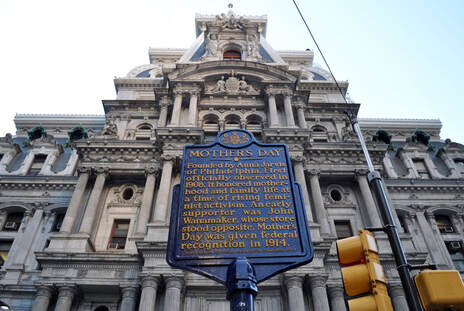 Anna M. Jarvis, the woman responsible for the holiday’s widespread celebration, eventually came to reject what Mother’s Day had become. As early as 1920, only a few years after it became a national holiday, she believed that it had been commercialized. Anna thought that the companies that sold cards, flowers, and other popular gifts were taking advantage of what she imagined as a genuine display of endearment for mothers. She felt that these companies were undermining what she wanted Mother’s Day to stand for: a simple showing of respect and love for one’s mother. Anna contended with the popular, commercialized version of Mother’s Day until she passed away in 1948. During those 28 years, she had decried companies that heavily advertised for Mother’s Day, going as far as to condemn some charities for using the holiday. Anna brought numerous parties to court for their use of the term “Mother’s Day.” Just as she had spent her own money to campaign in favor of the holiday, she used her own money to pay the court fees, trying to end its commercialization. Anna had even lobbied the federal government in order to remove the holiday from the calendar. Did you know? More phone calls are made on Mother’s Day than any other day of the year. These holiday chats with Mom often cause phone traffic to spike by as much as 37%!
0 Comments
Not only do participants in Run on History's Battle of the Alamo Race receive a custom-designed medal, but some of the proceeds of every race support a non-profit that helps former and present military members gain faster access to quality healthcare. 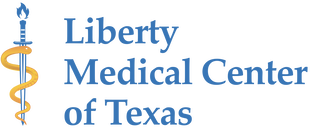 The Liberty Medical Center of Texas (LMC) is a 501(c)(3) located in the Dallas-Fort Worth metroplex that provides primary care and mental health services to veterans, currently serving military members and their families. In addition, LMC wants to help ease the patient backlog at the VA so patients receive more expedited care. Liberty Medical Center of Texas was a dream of William Widener, Jr. Widener enlisted in the U.S. Air Force in 2000 as a fireman and paramedic. He served in Operation Iraqi Freedom and Operation Enduring Freedom and was awarded the National Defense, Global War on Terrorism Expeditionary, and Global War on Terrorism Service medals. He went on to graduate with dual master’s degrees in Business Administration and Healthcare Administration from the University of Houston - Clear Lake. He served as an Administrative Director for a large psychiatric practice in Houston.  However, William passed away on January 6, 2020, before he could see LMC fully come to fruition. The current leadership and board members, though, made sure to bring Mr. Widener's dream to reality. In addition to donations, Liberty Medical Center also seeks volunteers. Visit their volunteer page to help support in roles from fundraising to marketing. Also, be sure to follow them on their Facebook page. If you have any other nonprofits in mind that you think we should support in future races, tell us all about them in our Facebook group!
Don't forget to sign up for the Battle of the Alamo race at https://www.runonhistory.com/battle-of-the-alamo-race.html to learn facts about what happened before, during, and after the fight while you move throughout your day. Run on History: Let History Move You Forward During Run on History's Battle of the Alamo race, you not only get cool historical facts about the Alamo as you move your way through the race, but you also get a beautiful medal for participating. The design of the medal was to commemorate not only the battle, but the city of San Antonio, TX. Read on for facts about each symbol used in the medal design, and where in San Antonio you can see it.  Top: The Alamo 300 Alamo Plz, San Antonio, TX 78205 The building known as the Alamo was originally a Spanish mission called Mission San Antonio de Valero in the 1700s. When the Catholic Church relinquished control in 1793, it became a self-governing community known as Pueblo de Valero. For more facts about the Alamo and what led to the battle of 1836, sign up for the race at https://www.runonhistory.com/battle-of-the-alamo-race.html. Left: The Torch of Friendship (La Antorcha de Amistad) 333 Losoyo Street, San Antonio, TX 78205 Unveiled in 2002, it was a gift from the Mexican government to the city that symbolizes cooperation and shared culture. It was commissioned by a group of Mexican businessmen living in the US. Mexican artist Sebastián created the 65-foot-tall abstract sculpture. Middle: Alamo Cenotaph Monument 300 Alamo Plaza, San Antonio, TX 78205 The granite monument bears the names of those who died in the battle of the Alamo. In the medal, we used just the rear view of the monument. Right: Tower of the Americas 739 E Cesar E Chavez Blvd, San Antonio, TX 78206 The tower was built in 1968 for the Hemisfair's World Fair, which celebrated the city's 250th anniversary. It took 18 months to build, and the name was chosen during a "Name the Tower'' contest. The red, white and blue colors are inspired by the Texas state flag.  On the back of the medal is a cannon with the words "Come and take it." The cannon represents the cannon fire that set the whole battle off and the Texians who defended the site. In addition to a medal, you can also finish the race knowing you helped a veteran receive quality healthcare. Race proceeds will benefit the Liberty Medical Center of Texas, which provides mental health and primary care for veterans and their families (read more on their mission at www.libertymedicalcentertx.org). If you have any other non-profits in mind that you think we should support, tell us about them in our Facebook group. Run on History: Let History Move You Forward Many people are familiar with the battle at The Alamo, a mission in San Antonio, TX, which was the site of one of the most famous last stands between Texian and Mexican troops. But do you know what happened before, during and after the march to the battleground? Run on History helps you learn these facts and more with our first race, The Battle of the Alamo, which kicks off June 1, using our partner app, My Virtual Missions. The 75-mile-long race is virtual, meaning you complete it at your own pace, such as everytime you walk the dog, cycle around town, practice yoga in your living room or run in a 5K. You don't need any fancy equipment either, just the My Virtual Missions app, your fitness tracker, some form of movement, and you're in! Even if you don't have a fitness tracker, no problem. Use the app to track your progress or manually input your distance along the race course. As you hit milestones, you will receive historical postcards pertaining to events leading up to the battle, during the 75-mile trek to the Alamo and after the fight. 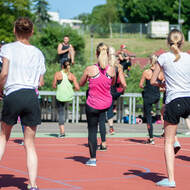 For example, after sweating it out in Zumba class, your fitness tracker reports that you danced the equivalent of 2 miles. With the many milestone markers in the race, you'll get pinged with a fact throughout. For example, you could get a notification that Lt. Col William B. Travis, who was one of the few against tearing down the mission, arrived at the Alamo. Plus, a little something else to raise your heart rate: a portion of the race proceeds will be donated to Liberty Medical Center of Texas, which provides personalized care for veterans and their families (read more on their mission at www.libertymedicalcentertx.org). If you have any other non-profits in mind that you think we should support, tell us about them in our Facebook group! Are you ready to race? Sign up for the Battle of the Alamo race on our website https://www.runonhistory.com/battle-of-the-alamo-race.html and join our Facebook group. We see the phrase "self care" thrown around often, especially as we trudge through the ongoing effects of the pandemic. As people deal with job loss, shutting down businesses, or remembering how to teach fractions and history lessons to your children at the same time as answering frantic emails from your boss, we're all finding ourselves not only stressed out and stretched thin, but also burnt out. You may not have the time, energy or money to join a gym to burn off some frustration, or the thought of working out may make your eyes roll in the back of your head. Fear not! There are still many ways to relax and release without adding the extra stress of spending money you may or may not have. Here are a few tips or suggestions on how to get your self care on:  1. YouTube It! Did you know there are free workout and yoga sessions available on YouTube? A quick search brings up hundreds of results. If you don't want to pay a monthly membership or deal with a group of yelling sweaty people, you can workout from the comfort of home. Just find what you love (or something you've always wanted to try) and give it a whirl. 2. Mindful Meditation Again, YouTube has a plethora of calming meditation playlists, as do pretty much any music streaming service, like Spotify, Apple Music or Amazon Music. I play affirmations for my kids at night before bed, then turn on nature sounds during my own wind down time. Meditation apps like Calm and Shine have free versions you can try, or pay to access even more programs. Meditation has been scientifically shown to reduce anxiety, stress and age-related memory loss while increasing focus and emotional health. Which sounds like exactly what we all need in these crazy times. 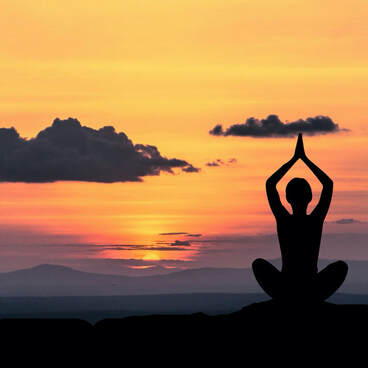 3. Put the Phone Down Have you ever read a post on Facebook that got you so upset, you couldn't sleep? Do you notice when you check work emails before bed that you spend most of the night staring at the ceiling thinking about what tomorrow will bring? Research shows that the blue light on the phone simulates daylight, which is great during the day, not so great before bed. The blue light suppresses melatonin, a hormone in your body that regulates your sleep-wake cycle. While some phones have a blue light filter, your best bet is to simply put your phone down just one hour before bed and pick up a book (or turn on that aforementioned meditation playlist!) It gives you and your brain time to calm down and drift off to sleep much easier, which means less irritation and drowsiness the next day. What do you do to relax and unwind? Let us know on our Facebook and Twitter pages! 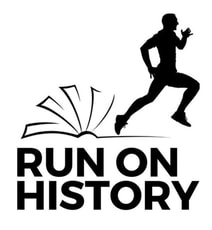
Imagine a program that marries PE and history class into a fun and factual fitness trek for the family? That's the experience that the co-founders of Run on History hope you have.
Run on History is the brainchild of Anthony Salas and Renee Hernandez, long time friends who put their skills and passions together to create this unique concept. For each distance you move, dance, run, shimmy or shake, you get a historical fact pertaining to the race theme. 
Let's say the race's theme is the Lewis and Clark expedition. After you run a mile during your morning jog, you get a fact that says Lewis and Clark walked a mile to reach a point in what is now known as Montana.
“Here at Run on History, we consider each race to be a journey," Salas said. "I hope that for whatever reason you joined the journey (fitness and/or history), you find a greater passion in both areas by exploring both together." The co-founders' backgrounds make perfect sense for this pairing of health and history. Salas is a 21-year military veteran currently serving as a Captain in the Air Force Reserve with prior service in the Marine Corps. He is also a Healthcare Administrator for the 307th Medical Squadron at Barksdale Air Force Base in Louisiana. Hernandez is a former teacher and award-winning technology development lead with a school district. She has over 10 years of digital curriculum development experience and has presented at over 100 conferences, leadership panels, and webinars. It seemed fitting to ask the co-founders historical and exercise-focused questions. Hernandez said, if given the chance to speak to anyone from the past for an hour, she would choose inventor Nikola Tesla. "Tesla would be a fascinating person to discuss how he came up with the innovative inventions he developed and what possibilities he sees for today's modern world," she said. Salas chose President John F. Kennedy, Jr., whom he called a "forward thinker." Salas said he would pick the former president's brain about the military (obviously). "Our discussion would revolve around his long-term vision for America and critical decisions he made during the Cuban Missile Crisis that prevented us from going into a nuclear World War 3." For the fitness trivia round, their choice of workout song selections vary. Salas said his favorite tune to exercise to is "Sandstorm" by Darude. Hernandez says she dials into R&B or a recorded lesson of a topic she's learning about.
If you're ready to work your brain and body at the same time, or just want to check out informative and interesting social media posts, follow Run on History on Facebook and Twitter.
|
|
Copyright © 2020 Run on History, LLC
|
Ask a question in Abe's Chat Corner!
|




